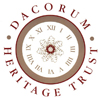Yes, well, this was government policy, right from the beginning underestimating the, the car ownership. All the time that we were busy helping the pedestrians and the cyclists and the motorists, the public transport system was struggling against an increasing car ownership and a perpetual annual loss of trade; and it was committed to meeting its operating costs against a falling market, and the only way it could do this was by fare increases. And we eventually reached a stage in the town where four women wanting to go shopping, found it was not only more convenient but cheaper to hire a taxi than to get on the bus. And we began to get a great deal of complaints – “You’ve done all these marvellous things for other forms of transportation. What about the poor old bus user?” So I was asked to investigate public transport.
We were faced at that time with an original service where people paid by the distance they travelled, and this wasn’t very popular, especially when the bus services wandered all over the housing areas, which added to the mileage and added to the cost. So we said, “No, we want a new fare system.”
We introduced a flat fare and we made it less than they had been paying on average, and we had the usual reduced fares for children and old-age pensioners. We wanted a new image for the bus service, and a new name for it, and we had some delightful experiments testing new liveries out. We had buses in the town square in different coloured liveries, in fact we had one pied piper bus with one livery on one side and one on the other side, asking people which they liked, and they clearly liked the newer, brighter colours. London Country were very helpful to us on this. They provided us with one of their commercial artists who designed the liveries for us, and we found to our surprise that people chose a, a bright yellow and blue livery as against the what you might call corporation green which the buses the ordinary buses were in at that time.
And we wanted a new name for the service. We spent a long time in committee with the bus operator trying to decide on, on a new name. We couldn’t agree on a name, and we had an independent researcher monitoring all that we were doing at that time, and he said to us out of the blue, “Well, I think you’ve got to have courage in your convictions. You keep talking about creating a super bus service: I think you should call it Superbus.”
So with our hearts in our mouths, that’s what we did, and we introduced the new name and the new livery, and then we went round the bus service and tried to tidy up the, the bus stops and provide shelters and do one or two things like that. And with the new flat rate fare, the new name, the new livery we found that in another three month period, the ridership rose again by a further 21 per cent, having now risen for something like 17,500 people trips per week to something over 25,000 trips per week. And of course at this stage everybody was getting interested in the bus service.









No Comments
Add a comment about this page